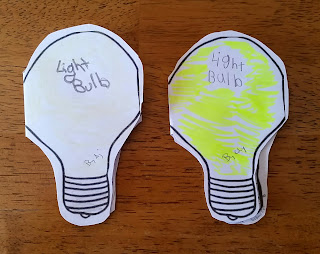Thomas Alva Edison, at 22, Moved to New York City. Working with a group of friends in an electrical engineering firm. Tom saved enough Money to build his first "real" laboratory. He moved to Newark, New Jersey and conducted many experiments. After a time, Tom had so many inventions and so much research underway he was forced to build an even larger laboratory in Menlo Park. It was there, in Menlo Park, along with his friend Francis Jehl, That tom invented the light bulb-one of the greatest inventions of all time.
The inventions did not stop there. Thomas Edison also invented the phonograph, perfected the telephone mouth piece, the first motion picture camera and much more. In all, Tom Edison patented over 1,2000 inventions during his lifetime!
Years Later, as a tribute to the now great, Thomas Alva Edison, his friend Henry Ford "recreated" the Menlo Park Laboratory in Greenfield village. Down to the most interactive details, Edisons laboratory was perfect and it remains there today. On October 21, 1929, fifty years after the invention of the light bulb, many people gathered at Greenfield Village to watch Mr. Edison "re-create" the famous discovery. All over the United States people listened to the radio broadcast from Greenfield Village by candlelight. When they heard the radio announcer say Edison had turned on his light bulb, Americans every ware blew out their candles and turned on their lights!
What we will learn in this chapter-
History: Invention of the Light Bulb
Science: A light bulb- How it Works
Language Arts: Supplemental Reading and Review Questions
Final Field Trip/ History:- Chatham Marconi Maritime Center
After reading this book my children said that they really enjoyed reading it because it was so interesting and entertaining. Lily and Aj also loved all the activities that they completed that went along with this story about Thomas Edison. We spent a lot of time on this last chapter. We went on two field trips, completed worksheets and learned about the invention of the light bulb.
History: Invention of the light Bulb
We took a field trip to the sandwich Glass Museum to learn about the devices that lighted homes from 1825 to the electric light bulb. The museum has The Levine Gallery of Early American Light. This gallery takes us through a demonstration of the the changes of a dark room where 50 lamps turn on one by one, Their are candles, whale oil lamps, Camohene, Kerosene lamps and Edisons first electric light. The kids also read a book about inventions and the history of sights and sounds.
Science- How a light bulb works
The kids read a book about how a light bulb works. They also watched a Bill Nye the science guy video, 2 u tube videos and they made a diagram book of a light bulb.
Language Arts- Supplemental Reading and Review Questions
The kids read a Thomas Edison supplemental resource book which includes a variety of activities for children. This activity pack is a great way to integrate social studies and reading into our school day. Some of the activities included a quiz and fact/option worksheet. These worksheet were purchased from teachers pay teachers. They also made inventions and colored pictures of Thomas Edison.
Final Field Trip/ History: Chatham Marconi Maritime Center-
We took a field trip to the Chatham Marconi Maritime Station in Chatham Ma. The kids learned about radio, Guillermo Marconi, World War 11 and breaking secret codes. Lily and Aj sent messages using More Code using an interactive kiosk. They also got to see how messages were sent by wireless from ships at sea to operators at the station and then by landline to telegraph offices around the country. They also got to participate in a Scavenger hunt.
Thanks for reading and we can't wait to read our next book!









































































